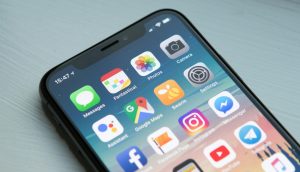The image is of Alyson Gausby.
In today’s age of distraction, attention to advertising is getting fickle, a problem possibly accelerated by media and social platforms. While social media has fundamentally changed the way we receive and process information, and the speed in which it’s consumed, it can’t be assumed that consumption patterns are identical across platforms.
To understand how attention works and to build on previous studies, Twitter and OMD Canada worked with Amplified Intelligence to measure attention to advertising across four top social media platforms – Twitter, Facebook, Instagram and TikTok. The study looked at the impact attention has on both short- and long-term brand key performance indicators (KPIs) for each platform.
Samantha Miller, director of strategy, OMD Canada, says attention to advertising is something OMD has been studying for about six years, partnering with a number of media vendors and Amplified Intelligence, which uses eye tracking to understand attention on advertising on various platforms. “This is an important metric to consider when pre-planning for clients, when strategizing the role of attention in a plan. We were able to see minimum and maximum seconds, and then passive vs. active vs. total attention. Passive being your eyes on screen but not directly on an ad, active with eyes directly on the ad. Then total attention would be an amalgamation of those two things.”
She says the study showed a variety in the range of seconds from less than 10 seconds to less than five seconds – depending on client brand, category and creative context – but that the findings were in line with what others are seeing in the industry. “To me, the most influential factor would be messaging. It does have an outright impact on whether or not people are paying attention.”
While viewability was previously the only indicator of media quality, the research results show that attention has a direct correlation to lifts in immediate purchase, short-term advertising strength (STAS), and long-term preference (mental availability). Noticeability drives attention, which increases recall and mental availability, which is defined as the likelihood of a particular brand coming to mind versus a competitor’s when a consumer is looking to make a purchase.
When looking at whether attention is directly linked to mental availability, the research found that increases in attention give a brand the ability to grow market share, while decreases in attention contribute to decline. Other findings include that when attention is in short supply, distinctive branding becomes even more important. It takes three seconds to build mental availability. Anything less is a nudge.
In the area of the impact attention has on both short- and long-term KPIs across social media, environment, content and context aid the receptivity of brand messaging and dynamic of active vs. passive attention.
Alyson Gausby, head of research for Twitter Canada, was surprised at how different the experiences are across platforms and how important attention is for driving results for brands. She was also interested to see the consistency in the results. “We conducted this study in Canada as well as other markets. The Canadian results were virtually identical to what we saw among global studies. It’s also very interesting to look at results across generations. We looked specifically at Gen Z versus other age cohorts and we found that on average, Gen Z did allocate less attention to ads, but we saw that the trends across platforms were consistent. The ranking for platforms was the same.”
OMD has already incorporated much of the attention data into its proprietary tool, Omni. It includes a calculator that helps the agency look at the minimum seconds required for an advertiser to capture attention in addition to a scenario player that accounts for attentive audiences. The tool covers a range of channels, including linear TV and connected TV.
Miller adds, “From an OMD perspective, probably the most compelling finding we had for this attention research is the combination of mental availability ultimately leading to sales uplift. From end to end, attention drives sales growth. That’s through mental availability. That’s through top-of-mind awareness. That’s through recall. Attention at the beginning stage ultimately always drives sales. So regardless of the channel or the platform, we’re always going to see a correlation between attention and sales growth.”
























